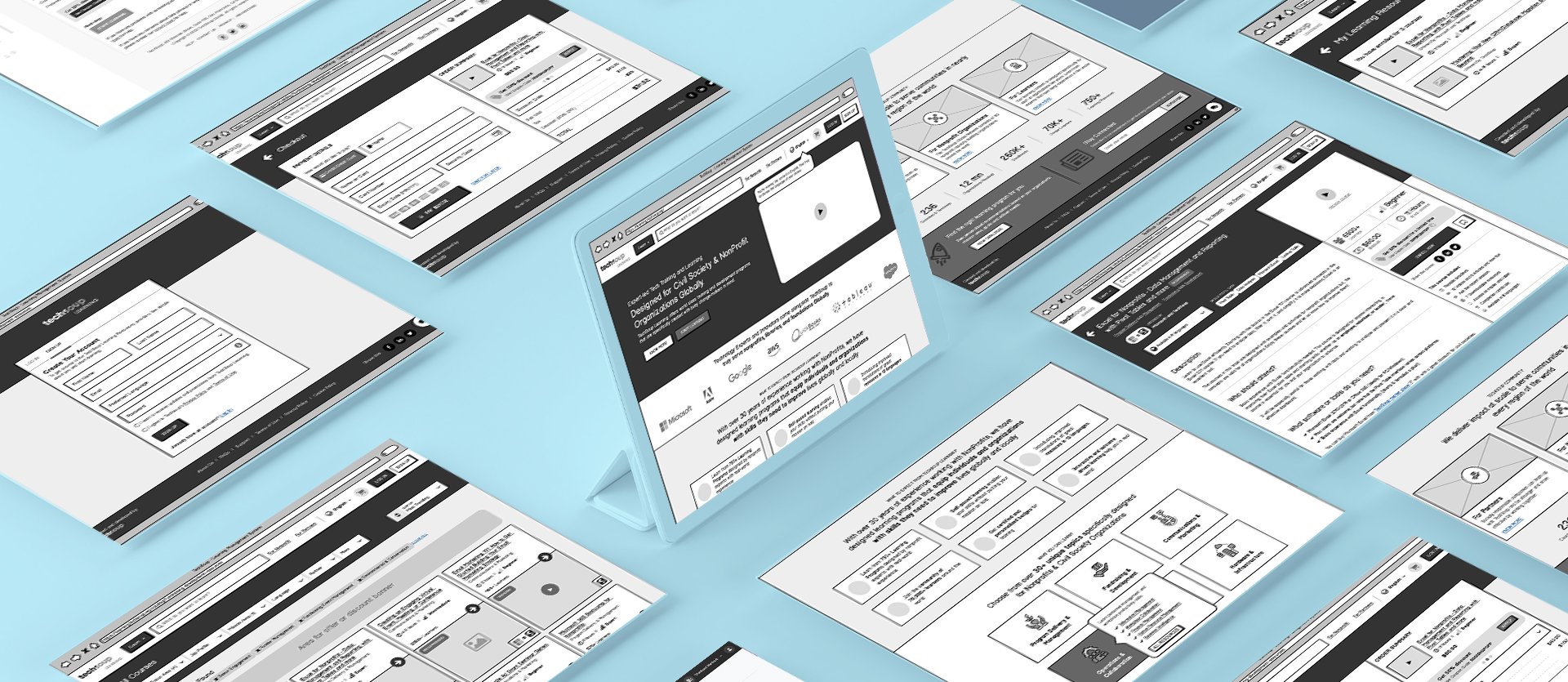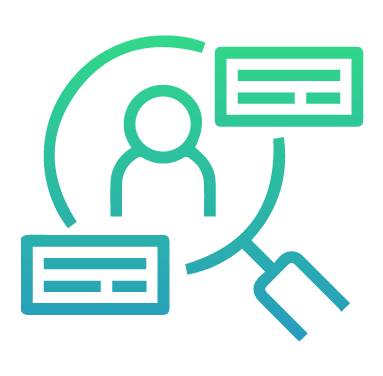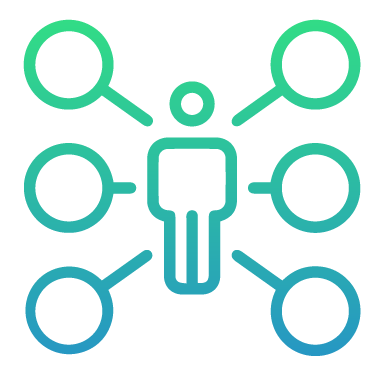How Digicorp Uses Product Discovery as the Stepping Stone to Craft Market-winning Product Experiences
Table of Contents
Anyone who has dipped their toes in the vast ocean of app development knows that making successful apps is no child’s play.
The numbers tell the same story as well.
99.5% of apps do not have what it takes to ace the market. Furthermore, only 1 out of 100 consumer apps and 14 out of 100 B2B apps pass the test of commercial success with flying colors.
These bleak numbers beg the question: What is it that forms the cornerstone of the success of an app? Is it just about adding more features? Eye-catching design? Splurging more and more dollars into marketing and promotion?
A while back, Brian Norgard, the Chief Product Officer of Tinder, said something that resonated a lot with us at Digicorp:
“A lack of product-market fit is never solved with more features”.
Interestingly, if we replace the word “features” in this quote with any other term, like “design”, “marketing”, or “competitive pricing”, the sentence would still hold water. The bottom line is that great products spring forth from excellent product-market fit. The right features, best-fit design, and an intelligent marketing strategy are natural outcomes of the same. Going about it the wrong way only leads to frustration, wastage of time and resources, and not to mention epic failures.
“An essential ingredient for excellent product-market fit is Product Discovery.”
In this blog, we shed light on Digicorp’s Product Discovery process that we have perfected over the last one-and-a-half decades by applying it to hundreds of products that we have developed for our clients as well as our home-grown ventures.
Let’s hit the ground running!
What is Product Discovery?
Product Discovery is all about diving deep into the heart and soul of a product idea. At the core of this process are the target customers for the app. In the Discovery phase, product teams develop a meticulous, profound, and holistic understanding of the needs of the target users that the app in question is expected to fulfill. These include both the stated and unstated needs of users. The process further involves a deep exploration of how these needs are currently met (i.e. the offerings made by the competitors at present), and what the user anticipates from a new product (i.e. what the new product should aspire to achieve through horizontal and vertical innovation).
This thorough understanding of product users translates into a set of markers for building the product like product features, product design, and the technology stack to be used for the product.
Why is Product Discovery Important?
Best-in-class product development teams like Digicorp use Product Discovery as a mission-critical tool in foolproofing apps against market failures. Instead, it sets the stage for development excellence, faster turnaround time, setting accurate user expectations, improved usability, and making the optimal choice of technologies and tools without wasting time, money, and resources.
Hence, Product Discovery enables a 360o understanding of the product premise and ensures development resources and effort are used optimally towards building a product that customers want to use and pay for. Post-launch, the nuggets of insights derived from the Discovery phase also inform the marketing and branding strategy for promoting the product.
The 3 Pillars of Digicorp’s Product Discovery Process
Digicorp’s in-house approach to Product Discovery is aimed at operationalizing product vision, customer empathy, and product clarity in the shortest possible time. To do this, we rely on the three pillars of Product Discovery that are carried out in collaboration with our client teams and inform all our decisions about making the app.
#1 Domain Discovery
At the outset, we start with extensive domain or market research for the product and correlate it with the product owner’s vision and objectives. This includes the following:
User Research
Customer Research
Competitor Research
User Research: “Know your user” – Surveys and in-depth interviews with the target product users give us clarity as to what benefits and features users are looking for. It helps us to identify the product scope based on who are going to use the app, what their needs and goals are, how they are fulfilling those needs currently, how tech-savvy they are, how diverse they are, how aspirational they are, how they are going to use the product, how often they are going to use it, and in what context (personal, professional, educational, financial, etc.) they are going to use it in their daily lives.
Customer Research: “Understand your customer” – In most cases, the users of a product are also the ones paying for it, i.e. the users and customers are the same set of people. But this may not always be the case. For example, apps developed for kids’ educational purposes would be used by children but will be paid for by their parents or schools. In this case, the children are the users but parents/schools are the customers. Such scenarios demand an in-depth exploration of the needs and goals of the customers of the app as well, in a manner similar to user research.
Competitor Research: “Benchmark your competitor” – Products rarely exist in a vacuum. Even the most innovative products have a set of direct or indirect competitors that they must outshine in order to become the users’ favorite. Since the users’ needs are currently being met by a set of competitors in the market, one can safely assume a certain level of stickiness that the users will have towards existing products/solutions. To break this stickiness, identifying competitors’ offerings and exceeding the benchmark set by them is of prime importance. See our Domain Discovery process in action in this case study where we created a cutting-edge EdTech Learning Operating System for schools in the US.
#2 Design Discovery
Digicorp adopts what is known as “Human-centered Design” when creating compelling products that delight and hook users. The human-centered design combines engineering, anthropology, cognitive psychology, and behavioral sciences to convert novel ideas into market-winning products. The process involves the following steps:
User Personas: “The One-size-fits-all Approach Never Works” – Users are rarely homogenous people with uniform needs and characteristics. Hence, right at the start, the various categories or groups of users for the product are identified. These user groups are then bucketed into clearly defined user personas with each persona having a unique set of goals, needs, characteristics, and usability challenges with respect to the product. Another key aspect of user personas is adherence to Usability Standards and Accessibility Standards to ensure that the product is inclusive and non-discriminatory.
Empathy Maps: “From Words and Numbers to Visualization” – An empathy map is a design-thinking tool that converts everything we know about a user persona into a visual representation. It combines the users’ needs and goals with the product development process and facilitates and pictorial view of how users’ expectations can be best fulfilled. It is the most fundamental element for UX and UI research and needs to be skilfully executed by experienced designers for the best results.
User Journeys: “A Step-by-step Map of the User Flow” – It is one thing to understand users, it is quite another to translate this understanding into a smart flow or journey for users to go through when using the product. The journey needs to be as easy, quick, and convenient as possible with markets and pointers along the way so that users don’t feel lost or bored, and can accomplish their product goals swiftly. The user journeys are converted to wireframes and mock-ups at a later stage.
Latest UX-UI Trends: “Staying on Top of Current Practices” – Lastly, the Design Discovery phase entails staying on top of the latest UX-UI trends that are currently being adopted in the specific market where the product will operate. While it is not necessary to be bound by the same, it does inform the larger design-related decisions of the product.
Functional Discovery (Feature Engineering): “What Will Get Our Users Hooked?” – Selecting the right set of product features to make the product delightful for users without overcomplicating it or overwhelming the user. Striking the perfect balance between user expectations and product capabilities is critical since users need to feel in sync with a product to use it in the best possible way. Dive deeper into our Design Discovery process in this case study where we augmented the existing LMS of a client (Techsoup) to build a highly engaging learning platform for nonprofits.
Case Study
Techsoup LMS by Digicorp

In the year 2021, TechSoup – an end-to-end provider of technical support and technological tools to millions of nonprofits across the world – decided to replace its existing Learning Management System (LMS) with a new one based on Open edX.
Launched in February of the same year, TechSoup’s LMS needed a major overhaul both in terms of user experience and design, as well as the underlying feature engineering.
Earlier, Digicorp is currently developing a Digital Assessment Tool for TechSoup to help their nonprofit clients assess their current technology adoption landscape and unravel strategies and resources to step up the same. Having witnessed Digicorp’s unique and result-driven approach first-hand, the TechSoup team reached out to us in October 2021 to help them with their ensuing LMS project.
Read the full case study here.
#3 Technical Discovery
The final leg of the Product Discovery process is the Technical Discovery. In this stage, we use the inputs from the Domain Discovery and the Design Discovery Process to identify the best technologies and tools that need to be deployed to make it happen. The steps involved are as follows:
Technology Stack Selection: “How Can We Best Fulfil the Product Promise?” – Identifying the best mix of back-end and front-end technologies to convert the selected features into actual product reality. The goal is to use technologies that have the maximum robustness, reliability, flexibility, usability, longevity, and adaptability such that different pieces of technology stack can work together seamlessly.
Data Architecture: “How Will the Product Use and Generate Data?” – The skeleton of a product’s usability lies rooted in how it uses data from the environment and also the data that it throws back to the environment. The data environment of a product includes its users, other apps that are integrated with it, inputs from back-end and front-end teams, data streams that are connected to it, and so on. A smart, lightweight, and clean data architecture goes a long way in keeping the product performance-driven.
Integrations: “Fuelling Connectivity, Not Silos” – In the digital world, products need to be able to “talk” to each other. Technical Discovery points us in the right direction in making this happen. Selecting technologies that are universal, multifaceted, flexible, and not bound by technical and geographic boundaries is crucial to the success of products that are on the path to global success. Integrations through APIs, embedding, and rapid, no-code integrations are some of the key aspects to watch out for.
Security and Compliance: “No Compromise with Product Safety” – Not all technologies are right for a product. This is especially true because the security and governance needs of users vary from product to product. A Fintech or Healthcare app, for example, will not have the same standards as a dating app or a social media app. The choice of technology will depend a lot on the kind of security rules to be implemented and the extent of compliance burden on the product based on existing regulations.
Maintenance and Upgradation: “Easy to Grow, Easy to Upkeep” – Finally, unlike physical products, real-world products need frequent maintenance. This could be due to a sudden spike in the number of users being handled by the app, a growing need for speed and scalability, obsolescence of any of the underlying technologies, as well as regular, routine maintenance to prevent bugs and security breaches from creeping in. The Technical Discovery phase helps to identify the technologies that are easiest to manage and maintain in the long run. Explore our Technical Discovery process in this case study where we helped the startup SprintMoney to design & develop a one-of-a-kind FinTech app for the Indian market.
Conclusion
Digicorp understands the product development process in-and-out, and never takes the shortcut by skipping important steps like Product Discovery. This is why with us by your side, your product is in good hands. Whether you are looking to build a new product from scratch or upgrade an existing one, we are your best bet. Know more about our projects and capabilities here, write to us at sales@digi-corp.com to kickstart your journey of product building and technology innovation!
Nachiket Patel
Co-Founder, VP (DIGICORP)
Nachiket Patel
- Posted on January 5, 2023
Table of Contents





